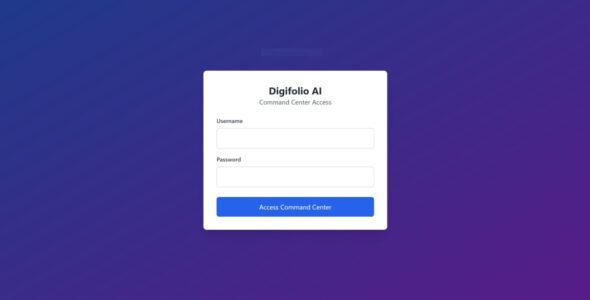Interactive Dashboards: Enabling Real-Time Real Estate Analysis
In the fast-paced and data-driven real estate industry, having access to real-time data and insights is crucial for making informed decisions and staying ahead of the competition. Interactive dashboards have emerged as a powerful tool that enables real estate professionals to visualize and analyze data in real-time, empowering them with actionable insights and facilitating data-driven decision-making. In this blog post, we will explore the significance of interactive dashboards in real estate, their key features, and the benefits they offer in enabling real-time data analysis.

The Significance of Interactive Dashboards in Real Estate
Interactive dashboards hold significant importance in the real estate industry for the following reasons:
1. Real-Time Data Access: Interactive dashboards provide real estate professionals with instant access to up-to-date data from various sources, including property listings, market trends, and customer preferences.
2. Data Visualization: Dashboards present complex data in a visual and easy-to-understand format, enabling real estate professionals to grasp insights quickly and identify patterns and trends.
3. Customizable Insights: Interactive dashboards allow users to customize the data visualization based on their specific needs and preferences, tailoring the analysis to focus on critical metrics and KPIs.
4. Comprehensive Analysis: Dashboards consolidate data from multiple sources, providing a comprehensive view of the real estate market, property performance, and customer behavior.
Key Features of Interactive Dashboards in Real Estate
1. Real-Time Data Integration: Interactive dashboards integrate data from various sources, such as property databases, market reports, and customer feedback, ensuring that the analysis is based on the most current information.
2. Data Visualization: Dashboards use charts, graphs, maps, and other visual elements to present data in an intuitive and visually appealing manner, simplifying complex data analysis.
3. Drill-Down Capabilities: Users can drill down into specific data points to gain deeper insights and understand the factors influencing trends and outcomes.
4. Filter and Interactivity: Dashboards offer interactive features that allow users to apply filters and explore data based on specific criteria, facilitating dynamic analysis.

Benefits of Interactive Dashboards for Real-Time Analysis
1. Faster Decision-Making: Interactive dashboards enable real estate professionals to quickly analyze data and make informed decisions in real-time, reducing response time and capitalizing on emerging opportunities.
2. Market Insights: Real-time data analysis through dashboards provides valuable market insights, enabling real estate professionals to identify trends, pricing patterns, and demand fluctuations.
3. Competitive Advantage: Dashboards empower real estate companies with a competitive advantage by enabling them to stay ahead of competitors through data-driven strategies.
4. Enhanced Customer Engagement: Interactive dashboards help real estate professionals better understand customer preferences and behavior, leading to personalized customer experiences.
5. Predictive Analytics: By combining real-time data with predictive analytics models, interactive dashboards enable real estate professionals to forecast market trends and make proactive decisions.
Conclusion
Interactive dashboards are instrumental in the real estate industry, enabling real-time data analysis and fostering data-driven decision-making. By providing real estate professionals with up-to-date insights, data visualization, and interactive capabilities, dashboards offer a competitive advantage, market insights, and enhanced customer engagement. As the real estate industry continues to embrace data-driven approaches, interactive dashboards will play an increasingly critical role in facilitating comprehensive analysis, driving success, and achieving growth in the dynamic real estate market.






[…] Interactive Dashboards: Enabling Real-Time Real Estate AnalysisIn the fast-paced and data-driven real estate industry, having access to real-time data and insights is crucial for making informed decisions and staying ahead of the competition. Interactive dashboards have emerged as a powerful tool that enables real estate professionals to visualize and analyze data in real-time, empowering them with actionable insights and facilitating data-driven decision-making. In this blog post, we will explore the significance of interactive dashboards in real estate, their key features, and the benefits they offer in enabling real-time data analysis.The Significance of Interactive Dashboards in Real EstateInteractive dashboards hold significant importance in the real estate industry for the following reasons:1. Real-Time Data Access: Interactive dashboards provide real estate professionals with instant access to up-to-date data from various sources, including property listings, market trends, and customer preferences.2. Data Visualization: Dashboards present complex data in a visual and easy-to-understand format, enabling real estate professionals to grasp insights quickly and identify patterns and trends.3. Customizable Insights: Interactive dashboards allow users to customize the data visualization based on their specific needs and preferences, tailoring the analysis to focus on critical metrics and KPIs.4. Comprehensive Analysis: Dashboards consolidate data from multiple sources, providing a comprehensive view of the real estate market, property performance, and customer behavior.Key Features of Interactive Dashboards in Real Estate1. Real-Time Data Integration: Interactive dashboards integrate data from various sources, such as property databases, market reports, and customer feedback, ensuring that the analysis is based on the most current information.2. Data Visualization: Dashboards use charts, graphs, maps, and other visual elements to present data in an intuitive and visually appealing manner, simplifying complex data analysis.3. Drill-Down Capabilities: Users can drill down into specific data points to gain deeper insights and understand the factors influencing trends and outcomes.4. Filter and Interactivity: Dashboards offer interactive features that allow users to apply filters and explore data based on specific criteria, facilitating dynamic analysis.Benefits of Interactive Dashboards for Real-Time Analysis1. Faster Decision-Making: Interactive dashboards enable real estate professionals to quickly analyze data and make informed decisions in real-time, reducing response time and capitalizing on emerging opportunities.2. Market Insights: Real-time data analysis through dashboards provides valuable market insights, enabling real estate professionals to identify trends, pricing patterns, and demand fluctuations.3. Competitive Advantage: Dashboards empower real estate companies with a competitive advantage by enabling them to stay ahead of competitors through data-driven strategies.4. Enhanced Customer Engagement: Interactive dashboards help real estate professionals better understand customer preferences and behavior, leading to personalized customer experiences.5. Predictive Analytics: By combining real-time data with predictive analytics models, interactive dashboards enable real estate professionals to forecast market trends and make proactive decisions.ConclusionInteractive dashboards are instrumental in the real estate industry, enabling real-time data analysis and fostering data-driven decision-making. By providing real estate professionals with up-to-date insights, data visualization, and interactive capabilities, dashboards offer a competitive advantage, market insights, and enhanced customer engagement. As the real estate industry continues to embrace data-driven approaches, interactive dashboards will play an increasingly critical role in facilitating comprehensive analysis, driving success, and achieving growth in the dynamic real estate market. […]
[…] Interactive Dashboards: Enabling Real-Time Real Estate AnalysisIn the fast-paced and data-driven real estate industry, having access to real-time data and insights is crucial for making informed decisions and staying ahead of the competition. […]